2021 was a year that brought about a historically large amount of Commander playable cards. The year went at full speed with four planes to explore over five sets and a healthy amount of Commander preconstructed decks. Due to the sheer amount of cards that came out, reflecting back on the year caused me to discover several cards that I had simply overlooked. This week, I would like to highlight a handful of cards that I plan to integrate into the decks that I build this year, especially forecasting what we know about the Standard-legal products we are looking forward to.
I will be looking at these sets in chronological order, starting at the beginning of the year with Kaldheim and working my way towards Crimson Vow. Along the way I will be talking about cards that I foresee having value as the year progresses, along with highlighting a few cards that I have added to existing decks. Right off the bat, I want to give an honorable mention to the cycle of snow duals from Kaldheim and the artifact duals in Modern Horizons 2, all of these will likely show up in the decks that want them and any reason to replace gates or other Invasion cycle lookalikes is a positive in my opinion. The snow duals even fill a nice role as budget replacements for any deck that has the ability to look for the basic land types, through cards such as Skyshroud Claim, Oreskos Explorer, or Igneous Pouncer. But no one came for land commentary, so let’s get to the list.
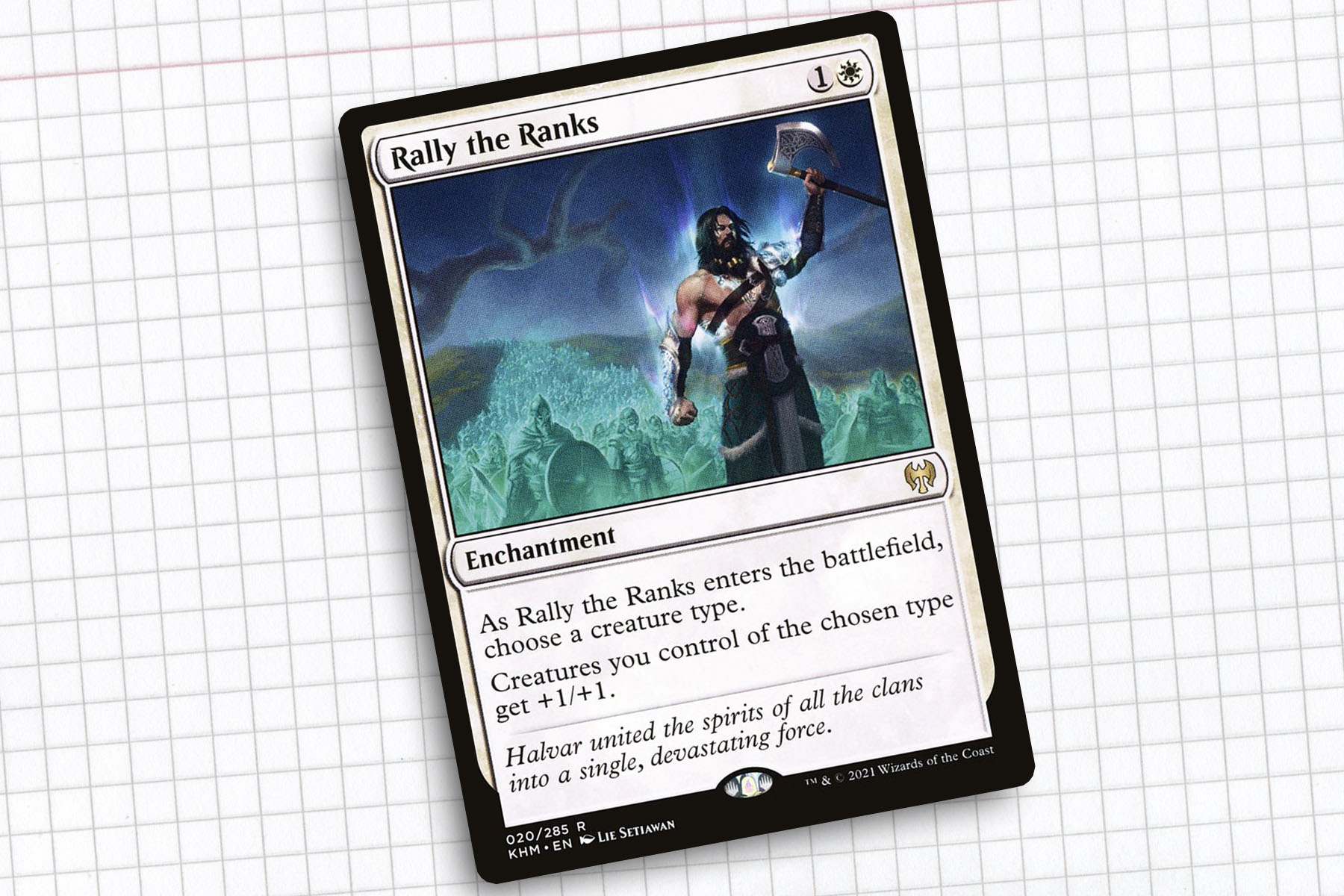
Rally the Ranks
A lot of my focus going into 2022 revolves around samurai. As I suspect they will likely be based in White and Red, the color identity got a lot more scrutiny than normal. Looking back at the year in chronological order, the heavy tribal themes of Kaldheim brought us a valuable anthem in the form of Rally the Ranks. Anthem effects are admittedly pretty easy to come by, but seeing as most of them have a mana value starting at three, a card like Rally the Ranks can fall at a great place on the curve to allow for back to back effects or an explosive turn three.
Samurai may be my brand going into Neon Dynasty, but the set will also likely bring some attention to spirits and decks lead by Quintorius, Field Historian may be seeing some retooling as a result. Demons may be seeing wider tribal support going into Streets of New Capenna, if rumors of three-color demon factions are correctly understood. And our trip to Dominaria will likely see a rise in Knight and Angel tribal. All in all, tribal effects are always going to be relevant cards to keep in mind and I think Rally in the Ranks is going to be a hidden gem in no time.
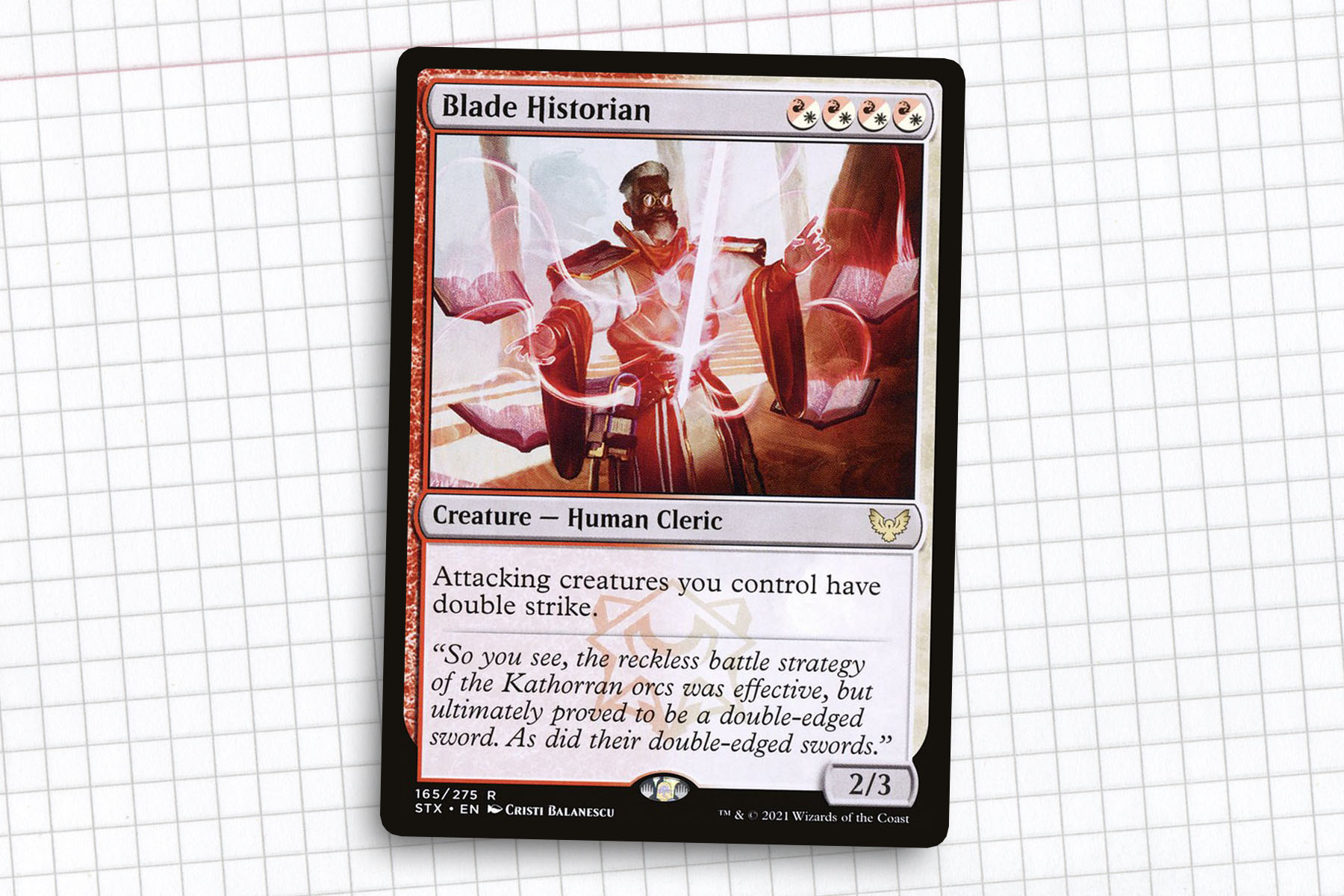
Blade Historian
When I first read Blade Historian, I thought, “that seems good.” The card turned out to be a complete game ender when played at the right time. Knowing again that samurai are very likely to return in Neon Dynasty, a tribe that ought to be proficient in combat and likely based in White/Red/X should be able to get solid use out of a creature that promotes entering combat. Of course, Boros does what Boros does and in truth, any deck looking to win through combat is going to want something as definitive as Blade Historian at any point in the game. This card should easily find a spot in Winota, Joiner of Forces, Alesha, Who Smiles at Death, or Ghired, Conclave Exile and be a solid staple for the foreseeable future.
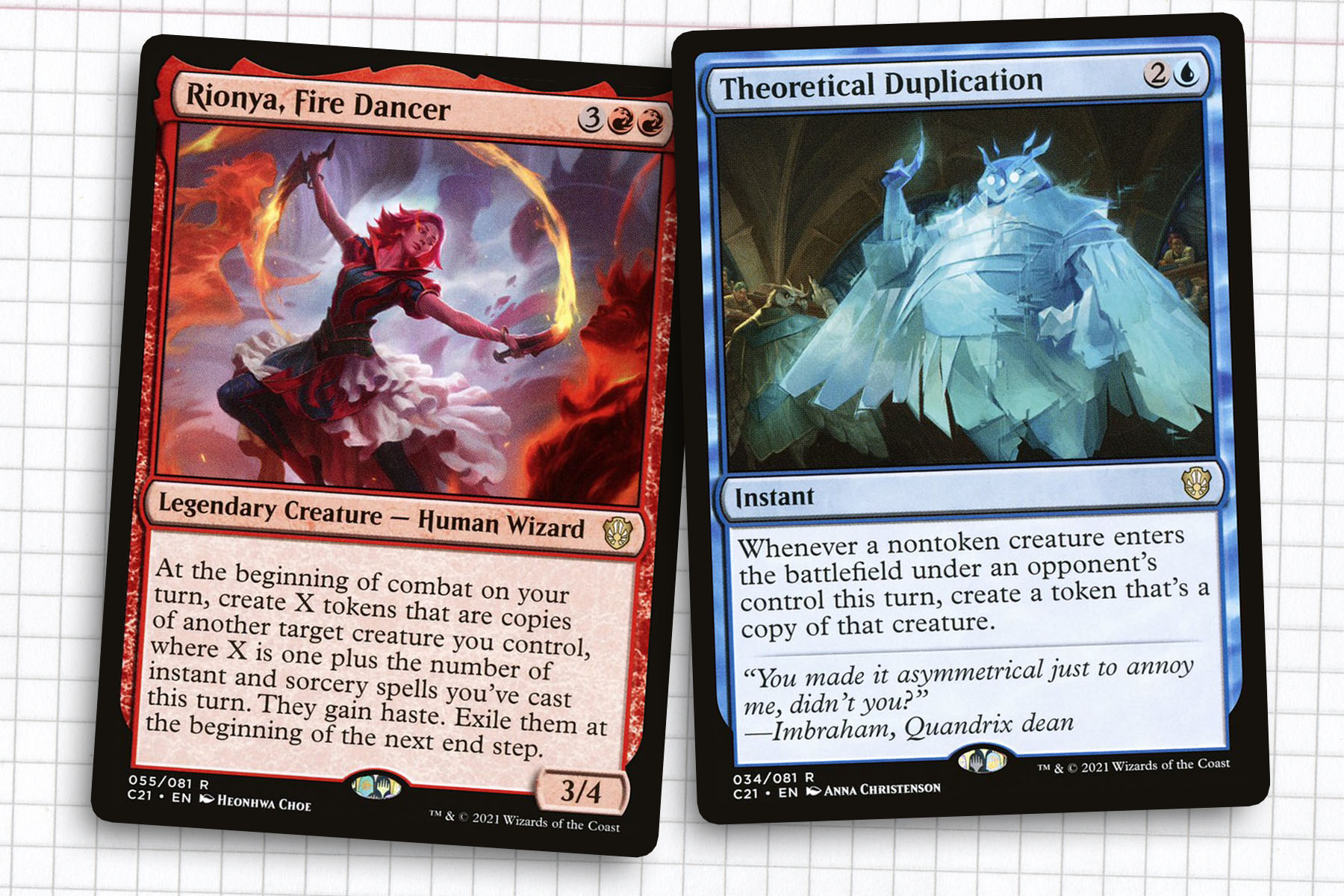
Rionya, Fire Dancer and Theoretical Duplication
Brudiclad, Telchor Engineer is a deck that I have let sit in a deck box for far too long, not seeing any upgrades since late 2018. Rionya, Fire Dancer and Theoretical Duplication came out last year and have lit a fire under my feet to start retooling that original passive build. Rionya, Fire Dancer is the kind of card that I have grown to appreciate the longer I have played Magic, not hitting you over the head with value, but rewarding the creative lines a player can “rube goldberg” together. Stacking the beginning of combat triggers to allow us to turn all of our tokens into something that either has a decent body or a strong attack trigger means that we should be able to pull off some wacky plays that were not easily available to us before.
In a similar sense, Theoretical Duplication will allow us to do the same thing with our opponents’ creatures. Suddenly having multiple copies of Tireless Tracker, Terror of the Peaks, or Quartzwood Crasher seem like great positions to be in. If there is one deck I would like to spend some time rethinking in 2022, Brudiclad is it. I think I’m going to have a lot of fun with tokens.
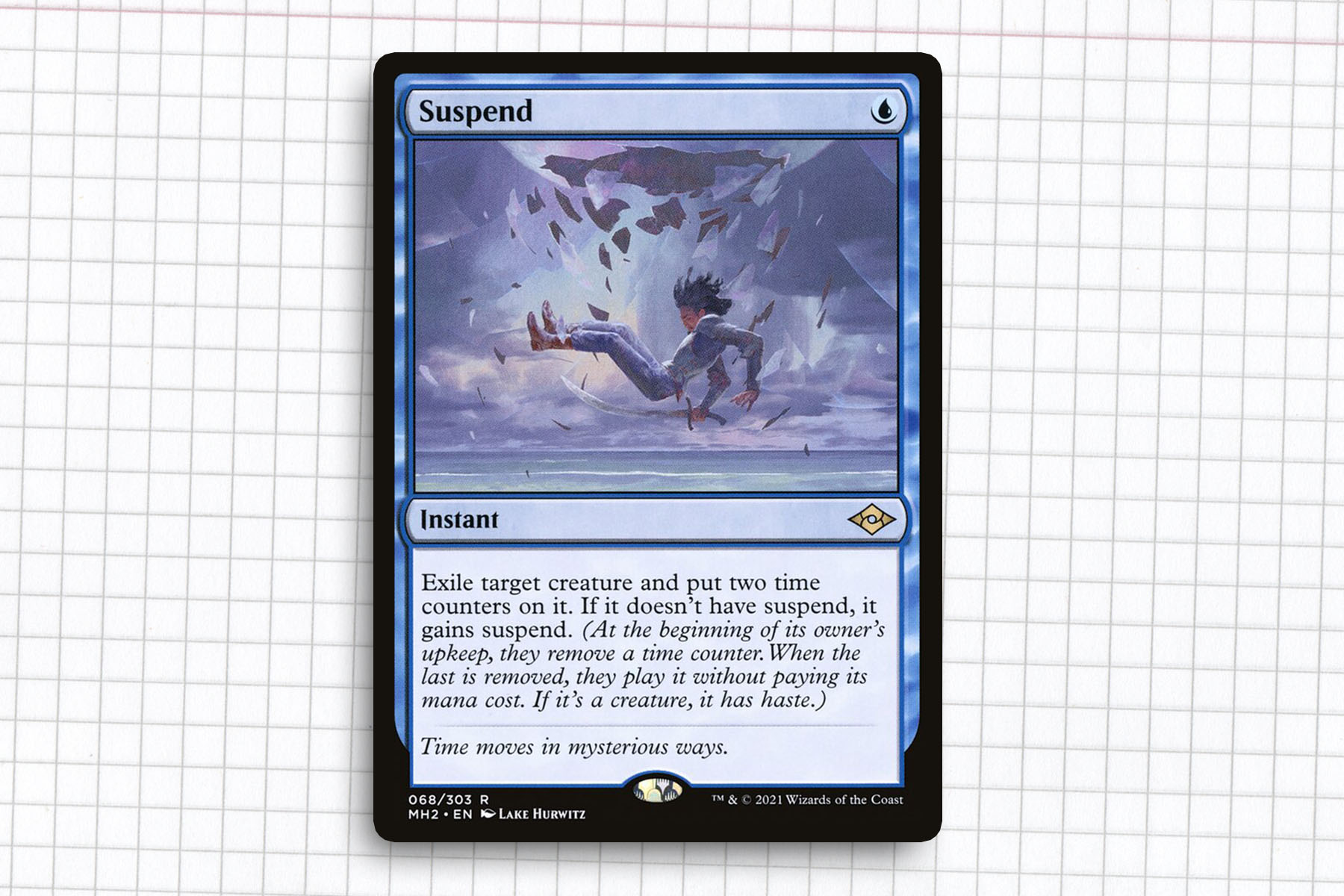
Suspend
I am an unabashed casual player and Suspend was possibly my favorite piece of removal from the entire year. Exiling a creature is so important in Commander and two turns, especially in the fleeting moments of the game, might as well be a hundred turns. The pushback I saw with the card was that it felt pretty bad to aim it at a general, which I cannot dispute. But for every Toski, Bearer of Secrets Voltron deck out there, Beast Whisperer, Seedborn Muse, or Shalai, Voice of Plenty that are just accruing too much value every turn. Equally important is the versatility the spell offers, allowing us to have a crucial creature dodge removal and possibly return to play if we stall the game out. It might not be the most impressive card in the deck, but I think Suspend has a role to play.
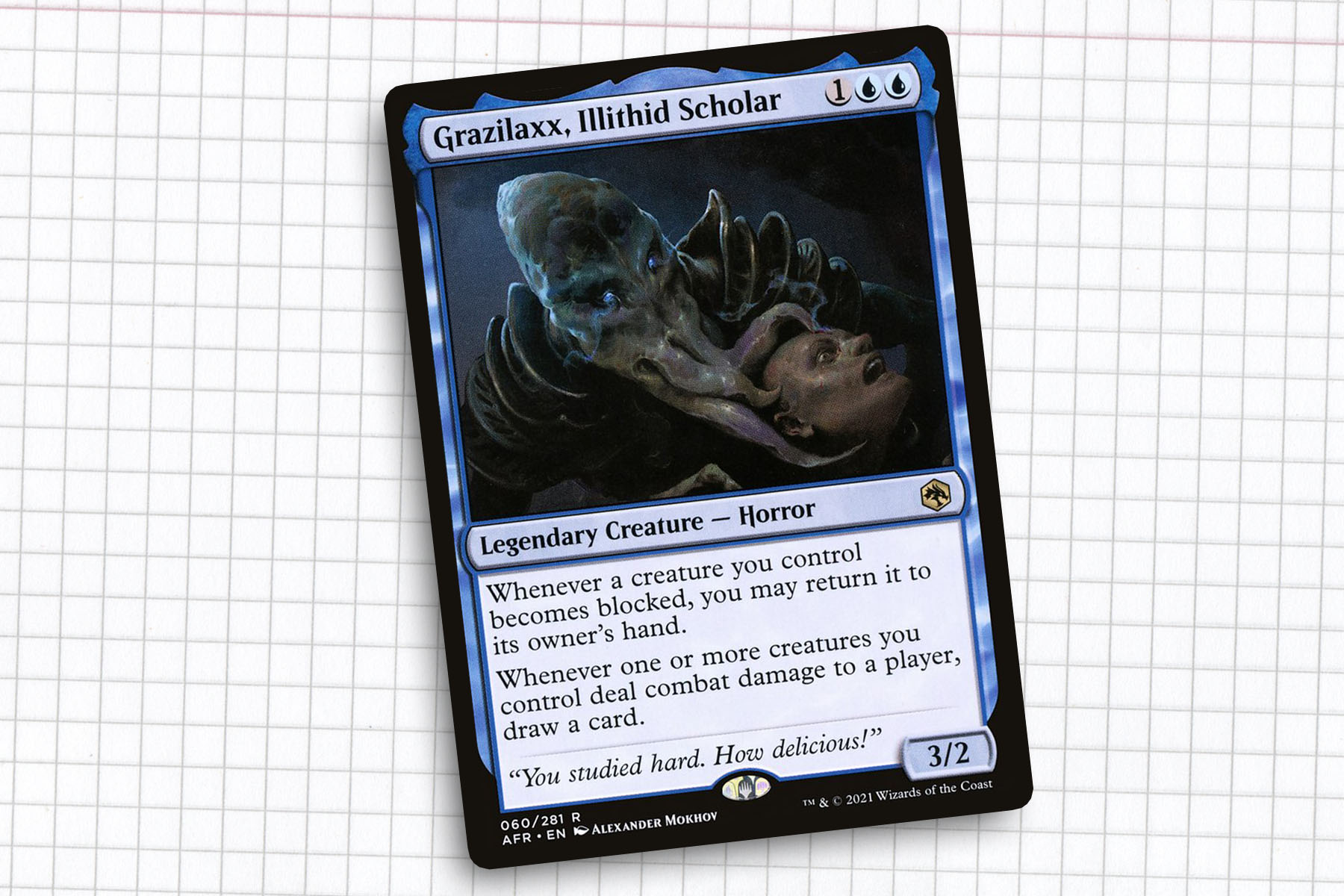
Grazilaxx, Illithid Scholar
One of the pieces of Dungeons and Dragons lore that I was highly anticipating going into Adventures in the Forgotten Realms was their introduction of mind flayers to Magic. Along with beholders, they are instantly iconic monsters within the game and when the set dropped, I was not disappointed. I would have loved to see more than three, but with a world as big as D&D, space had to be tight within the set.
I want to find a deck for Nihiloor to helm, I just never found the time to commit to giving them a spin. Mind Flayer itself is a slight downgrade from Sower of Temptation, but adds variety in the Control Magic effects we have to choose from. In fact, one of my few in-person games for the year saw a Mind Flayer get mutated into Archipelagore, before being hit with Rite of Replication, officially making it the most Control strategy play of the year that I witnessed.
Of the three, I think Grazilaxx, Illithid Scholar should be the most widely adopted. Having played a fair amount with Cunning Evasion and Gustcloak creatures, the ability to protect our creatures from surprise blockers or combat tricks can really help in reducing the loss of advantage over the course of a game. The most obvious spot Grazilaxx will find themselves in is ninja decks, which we know will be seeing a spike in popularity this year for sure. But overall, I’m stocking up, just because I see a fair bit of use for the psychic horror monster in the future.
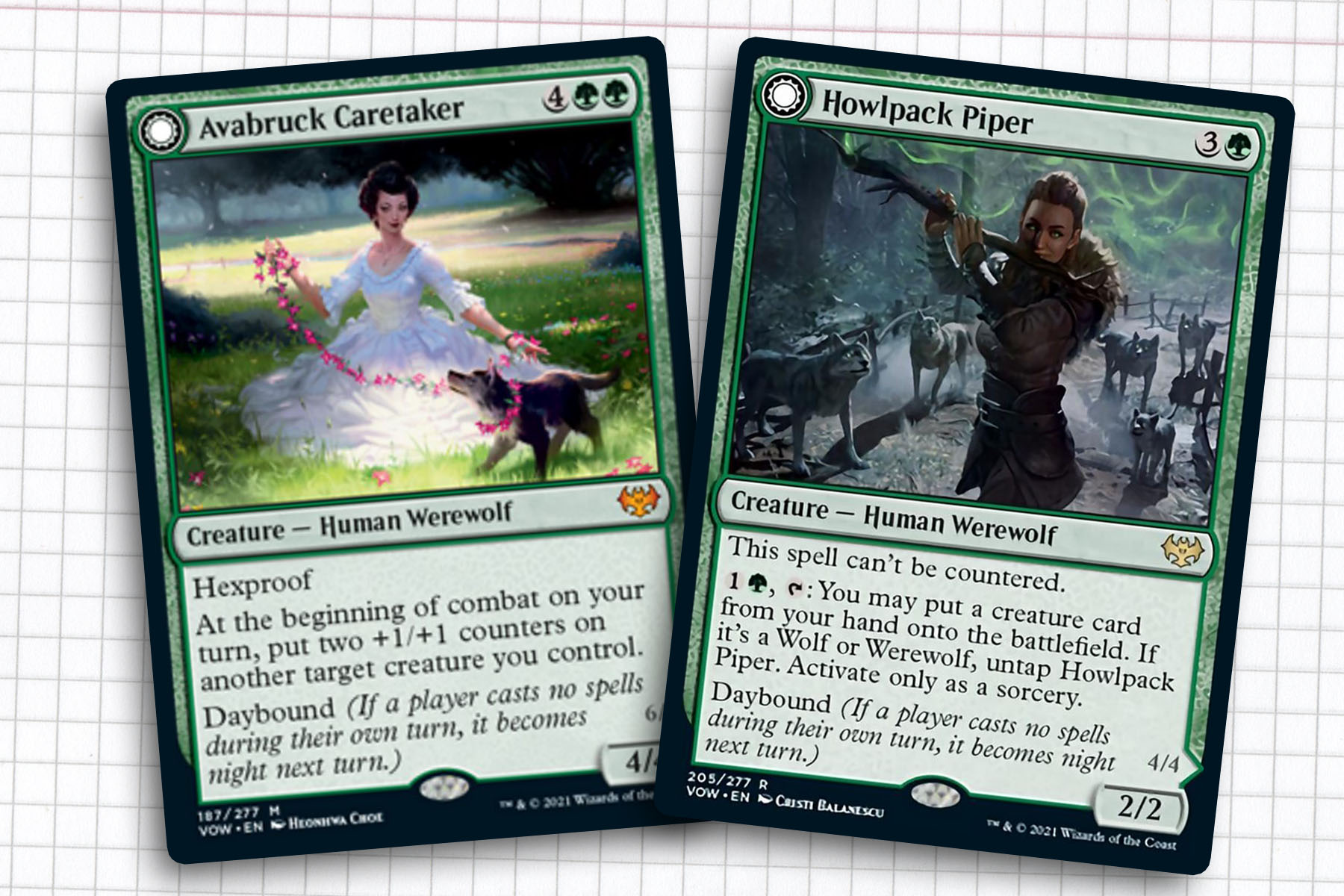
Avabruck Caretaker & Howlpack Piper
We have been dislodged from the world of two and three set blocks for long enough that I was irrationally surprised by the inclusion of a few solid werewolf cards appearing outside of Midnight Hunt. This was common place in the during the era of blocks, archetype pay off cards would be snuck in the last set to round out a deck, like Glistener Elf, Eidolon of Blossoms, or Merfolk Mistbinder, so it should have been reasonable to assume that Tovolar, Dire Overlord was going to upgrades immediately after being printed.
A lot of people are very aware of how good Avabruck Caretaker is, this top of the curve creature protects itself and pumps a creature when it first comes into play, before transforming to run away with the game if you can maintain night. As a deck Tovolar is obviously pretty new, but in my experience, tracking night/day has not been especially hard at a table of four or five people. If Tovolar is not in play to force the issue, Avabruck Caretaker puts a lot of pressure on the player just before you to stave off night as much as possible, which is not always a simple task for some decks, especially if they play at flash speed and don’t usually cast spells on their turns.
On the more casual side, Howlpack Piper is a callback to Elvish Piper, a nigh unstoppable card in the 2005 lunch table metagame. Howlpack Piper is not as good as the original, needing more mana and at sorcery speed, but it still dodges actually casting a spell to help set up night, then transforms and finds me another creature. I’m not sure where else it will crop up in the coming years, but I would play it even without wolves and werewolves.
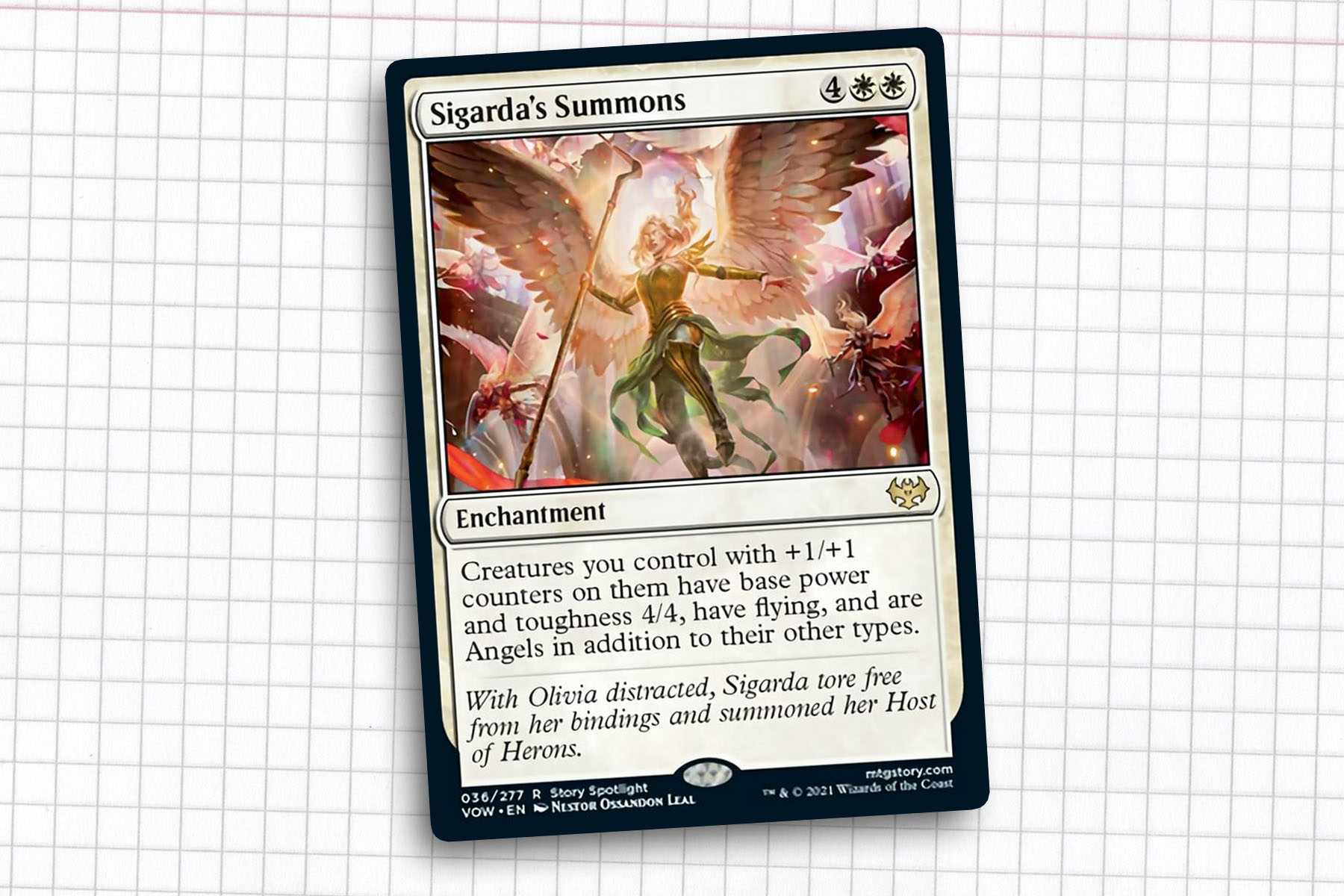
Sigarda’s Summons
Because I loved Midnight Hunt so much, I didn’t pay much attention as Crimson Vow was being previewed and had barely touched the set on Magic Arena as the year wrapped up. To my surprise, when I was glancing through the set and saw Sigarda’s Summons, I was immediately interested in the card. The ease of access to +1/+1 counters is everywhere in Magic, so take your pick of decks you’d like to include it in. But I especially want to put this in the Gerrard, Weatherlight Hero I wrote about at the end of 2020, which uses a high density of modular creatures, like Arcbound Overseer and Arcbound Shikari. The ability to make all of my 0/0 artifact creatures default to 4/4 with flying is huge and I see it as the Overrun effect the deck needs to close out games out of nowhere.
I have a lot of high hopes for 2022. While it will not be a hard and fast rule, I would like to focus a good amount of my time this year on highlighting decks that I have written about in the past in an effort to provide a little bit more continuity. I hope to really fall in love with a few legendary creatures this year, but I want to give special role players and really bring the best out of any deck I highlight. Here’s to another year, thanks for coming along with me.
Ryan Sainio is a Graphic Designer who writes about EDH and the EDH community. He has been playing Magic: the Gathering since 7th Edition in 2002 and values flavorful and fun gameplay over competitively optimized decks.

